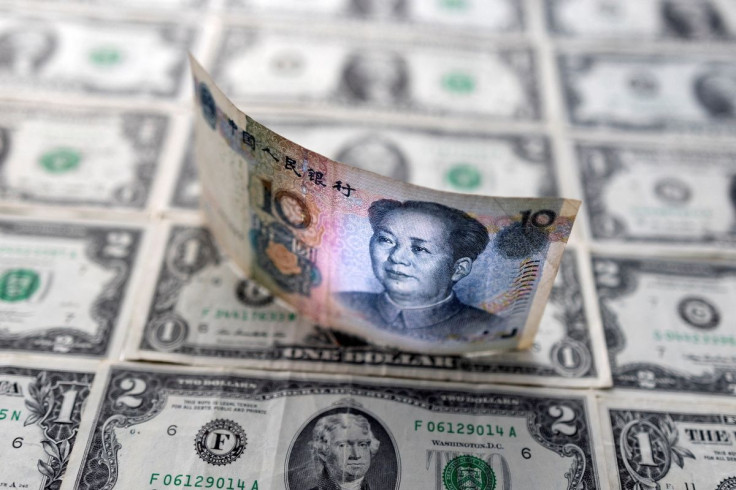Rouble Sell-off Slows, Dollar Resumes Rise As Ukraine Crisis Buffets Trade

The rouble tried to regain some stability on Tuesday after its crash to an all-time low, while the U.S. dollar resumed its rise against major peers as traders paused for breath amid the fast-moving Ukraine crisis.
A modicum of calm has returned to currency markets since officials from Russia and Ukraine held an initial round of ceasefire talks overnight, four days after Russia invaded its neighbour, allowing some of the big moves from the start of the week to retrace after many positions were cleared out, said Shinichiro Kadota, senior FX strategist at Barclays in Tokyo.
"Who knows what happens next: Russia might become more aggressive, or they might agree on something, although what that could be is very difficult to predict," said Kadota.
"People are just watching the headlines, but we're at a point where unless there's some obvious negative news, the market is trying to stabilise a little."
The safe haven yen and Swiss franc pulled back after their biggest rallies in almost seven weeks against the dollar on Monday.
The greenback added 0.16% to 115.145 yen, after registering a 0.47% slide overnight. It rose 0.20% to 0.9185 franc, following Monday's 0.95% retreat.
The euro resumed its decline, dropping 0.25% to $1.1191, but well off the low of $1.1121 from the previous session.
The risk-sensitive Australian dollar slipped 0.15% to $0.72525 after earlier touching a nearly one-week high of $0.72670. The Reserve Bank of Australia held the key rate steady at a record low on Tuesday, as expected, noting that the Ukraine conflict added a new source of uncertainty to the outlook.
The New Zealand dollar slid 0.35% to $0.6756.
Leading cryptocurrency bitcoin edged back toward $43,000 after leaping to a nearly two-week high above $44,000 late overnight.
The rouble started the week in dramatic circumstance, plunging as much as 30% to a record 120 per dollar after Western countries and their allies slapped Russia with new sanctions including cutting off some banks from the SWIFT financial network. The currency recovered somewhat after an emergency rate hike and other urgent measures adopted by the Russian central bank, and last traded flat at 101.
Currency volatility was at its highest in 14 months on Monday, as measured by a Deutsche Bank index.
"News from Ukraine remain bleak," Rodrigo Catril, senior foreign-exchange strategist at National Australia Bank, wrote in a note. "Fighting rages on as the West looks to increase efforts to isolate Russia."
The instability will keep safe-haven currencies - including the dollar - bid, and the euro under pressure, Catril said.
The dollar index, which measures the greenback against six major rivals, rose 0.15% to 96.885, but well back from Monday's high at 97.438.
The currency was helped by a tick up in U.S. benchmark 10-year yields in Tokyo trading on Tuesday, after they dropped to an almost one-month low overnight as investors sought the safety of Treasuries, even with the Federal Reserve seen certain to raise interest rates at its policy meeting next month. [US/]
The Ukraine crisis has seen traders pare bets for a 50 basis-point rate hike on March 16, with current odds at 11.4%, according to CME's Fedwatch tool.
Atlanta Fed President Raphael Bostic said on Monday that he's not ruling out a half point move, although he favors a quarter point increase, in the first comments by a Fed official since the conflict.
"The bottom line: do not write off a 50bp increase," Commonwealth Bank of Australia strategist Joseph Capurso wrote in a client note, saying market pricing had gotten too low.
"The near-term trends in the USD will be dominated by the war, but the medium-term trends in the USD will be determined by the economic data."
© Copyright Thomson Reuters 2024. All rights reserved.




















